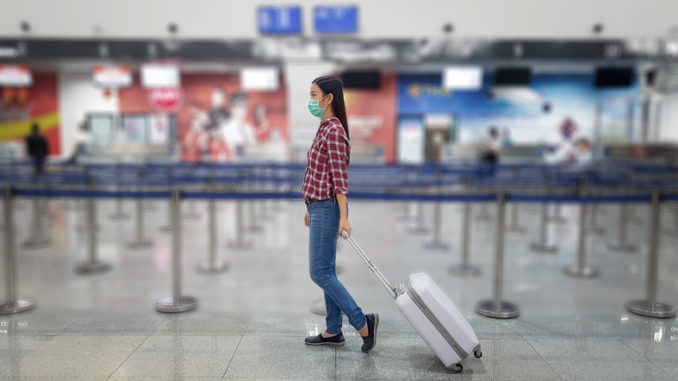
I am going to write a feature story about international students who are currently trapped in their home country because of the travel ban by Australia but still have to pay rent for their apartment here. During the COVID-19 pandemic, many international students cannot come back to Australia to continue their studies. Some of them choose to take online courses and some of them have suspended their study. Yet the same thing they cannot avoid is the rent they have to pay in Australia. They have signed the contract and their furniture is still in the apartment. Since the Australian government has provides ranges of support for people who are affected by COVID-19, international students are not on the list. The specific angle of this story is how international students try to avoid paying meaningless rent when they are not in Australia.
You can refer to these news articles below for more information:
International students in Australia speak out: “Governments have done nothing to help us.”
Why coronavirus impacts are devastating for international students in private rental housing.
Coronavirus: Calls for student accommodation fees to be waived.
Why is this newsworthy:
International students are very important for universities and the education industry in Australia. Education export has become the third largest export industry in Australia. However, the welfares of international students have not gained much attention when they are suffering from paying heavy rent but cannot actually live in the apartment they are paying for. Also, this situation is directly resulted from the widespread of the coronavirus, which is the hottest topic in any country and any industry.
Where should it be published?
The chosen published cite is Honi Soit, the student newspaper of the University of Sydney. The target audiences are university students, who might also be the victims of this event. Also, the editors in the newspaper are mostly university students, and they have personal experience on this issue and can deliver the feature story in the best way to get people’s empathy.
How should the story be organized?
The story will start with an interviewee’s experience in this event. This will include how she was trapped at China because of the travel ban in Australia, and she has to pay $750 per week for her apartment on Central Park because she has signed the contract for a whole year, and she cannot go to move the furniture because the only key is with her in China. Then is the context information about what other people are affected by the pandemic and how the government provides assistance to help them out. In that case, International students are not receiving enough help, even though they have contributed a lot for the Australian economy by paying a lot of tuition.
Legal advice will also be included in this story by quoting suggestions from legal services. The interview will also be conducted with real estate agencies to ask their opinions on whether the rent on international students should be waived or reduced.
Multimedia, hyperlink, and SEO.
There will be multimedia such as videos from the Internet, pictures, and screenshots from what people posted online to support the fact. Also, news articles will be embedded in hyperlinks. SEO will be executed throughout the story by using appropriate headlines, keywords, and tags.




Hi, Zhuoran! I think this plan is very interesting and comparatively integrated. The topic is extremely closed with us and it worth deliberate. I believe that this feature will be attractive. In addition, I also think there is still room for improvement in this good feature plan, and I have some genuine suggestions for you. Firstly, paying meaningless rent does not only focus on international students, some people who have temporary visas and work in Australia also encounter this problem. Secondly, almost every Australian university provided support to international students who suffer from the travel ban such as reducing the tuition fee, financially supporting the students who transit in a third country and if some students fail the courses, they will not pay the tuition fee for these courses next term, you could not overlook them. Thirdly, I think you could deliberate your publishing platform, because your target audiences are university students, it is incompatible. Honi Soit belongs to the University of Sydney, but there are totally 42 Universities including Public and private universities in Australia. This problem does not just focus on the international students of University of Sydney. Finally, I think you could pay more attention to check your grammar. I did not see many pictures or videos in your feature plan, I hope I can see more multimedia elements in your Assessment 3, I hope I can see a magnificent feature article in the foreseeable future.
Hi Zhuoran, great proposal! As one of the international students who’s still stuck in China and paying rent in Australia, this topic really resonates with me. There are two comments I want to make here. 1. If the aim of this feature is to appeal for more financial support from the Australian Government, you may need to provide some proof that other countries are also compensating international students for the rent and query the government why they didn’t. 2. You can seek for other publications like Sydney Morning Herald to publish this feature as SMH does have a section for education. The target audience of Honi Soit is USYD students and we definitely support more fund from our sides. However, this feature needs more exposure to attract policy makers’ attention.
The topic of your story is very interesting and important, which is indeed a common concern of many Chinese students who could not return to Australia during the outbreak of COVID 19. The structure of the article is clear, each question is clearly identified with a title, and each question is explained in detail. Most of the important information you have attached is hyperlinked, so that the audience can link to other pages to receive more information, and make the article clear and not cumbersome. I suggest that you can use different media forms to enrich the content of the article. Most of your articles are written in the form of text, and there are almost no pictures or video or audio, which may make your article form a little single. Adding pictures and videos should increase the audience’s interest. At the same time, I found that most of the answers to each question in the article are in the form of a paragraph.
The topic of your story is very interesting and important, which is indeed a common concern of many Chinese students who could not return to Australia during the outbreak of COVID 19. The structure of the article is clear, each question is clearly identified with a title, and each question is explained in detail. Most of the important information you have attached is hyperlinked, so that the audience can link to other pages to receive more information, and make the article clear and not cumbersome. I suggest that you can use different media forms to enrich the content of the article. Most of your articles are written in the form of text, and there are almost no pictures or video or audio, which may make your article form a little single. Adding pictures and videos should increase the audience’s interest. At the same time, I found that most of the answers to each question in the article are in the form of a paragraph.It might be clearer to break the whole paragraph down into bullet points.